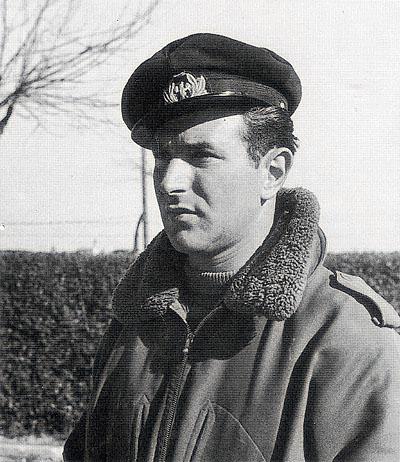He fought first in the ranks of the Regia Aeronautica and, after the armament of the September 8, he fought with the ANR, the Republican National Air Force. They are officially accredited by 19 air victories, 15 with the RA and 4 with the ANR, plus 9 damaged aircraft, although according to some sources we would talk about a total of 24 aircraft shot down.
What is certain is that it faced in flight, resulting winning, aircraft such as the Bristol Beaufighter, the Curtiss P-40, the Spitfire, the P-38 Lightning, the P-47 Thunderbolt and the bomber Consolidated B-24 Liberator and B- 17 Flying Fortress.
Gorrini was born in Alseno in the province of Piacenza on 12 July 1917. At the age of 20 he enrolled in Aeronautics, completing the pilot course at the School of Specialization in Castiglione del Lago.
He obtained the military pilot's license in the 1939 and was assigned to the 85ª Squadriglia, 18 ° Gruppo, of the 3 ° Stormo "Caccia Terrestre" of Turin-Mirafiori.
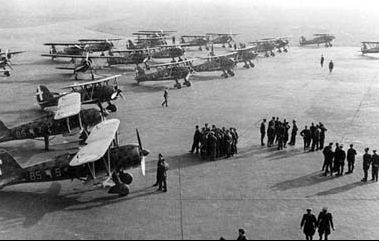 With Italy's entry into the war on 10 June 1940, his unit was transferred to Novi Ligure and subsequently to Albenga. At the beginning of the Second World War Gorrini was still a very young and inexperienced pilot, fresh off his patent, but despite this he immediately proved his worth in the first actions against France, aboard the Fiat Cr. 42.
With Italy's entry into the war on 10 June 1940, his unit was transferred to Novi Ligure and subsequently to Albenga. At the beginning of the Second World War Gorrini was still a very young and inexperienced pilot, fresh off his patent, but despite this he immediately proved his worth in the first actions against France, aboard the Fiat Cr. 42.
The first missions that are entrusted to his Squadron are machine-gun missions on the airports and on the French airfields, but he will soon have to deal with the first air fights against the Dewoitine 520. Several times he will declare, in the interviews granted in the past few years, that in the very first air clashes he had to deal with his own conscience. He could maneuver his Fiat Cr. 42, a maneuverable and agile machine, but undoubtedly slow and poorly armed compared to the Allied aircraft, and when it was in position, ready to take down the enemy aircraft, it was taken by hesitation. In front of him he had a man who had done nothing wrong with him. He wanted to take down the airplane but not cause death or injure the opposing pilot. But the war did not allow certain hesitations and this was realized when he began to see his companions fall during the war. Despite this, Gorrini, has always claimed to have tried to hit the enemy aircraft on the wings and never on the cockpit, telling of even having launched water bottles to the pilots who had forced to parachute from their aircraft on fire.
After this first impact with the war in southern France, he was part of the CAI (Italian Air Corps) employed on the Channel, participating in escort missions of the Axis bombers, and the 1 October 1940 was promoted to Sergeant Major. The battle of England will always stress the inadequacy of the Axis aircraft, both bombers and fighters. In fact, the escort missions highlighted the structural deficiencies of the bombers that in addition to not holding the fire of the machine guns of the English Spitfire, presented technical problems that in themselves constituted a serious problem to the crossing of the sleeve and the achievement of goals.
In January of 1941 its Squadriglia was deployed in Libya, equipped, once again, with the modest biplanes Fiat Cr. 42. An aircraft certainly agile and manageable, probably the best biplane that has ever been built, but in any case an aircraft already dated for the 1941, poorly armed and decidedly slow compared to the aircraft of the Allies. Despite the limitations of the car, the 16 April 1941, Gorrini obtained his first air victory in the skies of Derna, in Cyrenaica. He glimpsed a pair of heavy Beaufighter fighters from the British Royal Air Force on the horizon and launched himself into the enemy's attack. The enemy armament was superior in number, well 8 machine guns against the two machine guns from 12,7 mm of the Cr. 42. But the binomial machine man, what only an Ace can bring to full accomplishment, led to the victory of Gorrini. The 29 May was repeated in a meeting with the Bristol Blenheim bombers of the RAF, this time on the skies of Benghazi. He broke down a first enemy aircraft and forced a second, damaging him, to escape.
 In the winter 1941-42 returned to his homeland with his own department, he obtained the passage on the Fiat G. 50 "Freccia" and on the Macchi Mc. 200 "Lightning". Subsequently it was employed in the Greek campaign in escort missions of the convoys between Italy and Greece. A year later, in the winter 1942-43, he returned to fight in North Africa, this time under the command of Macchi Mc. 200 "Lightning" and Mc. 202 "Folgore".
In the winter 1941-42 returned to his homeland with his own department, he obtained the passage on the Fiat G. 50 "Freccia" and on the Macchi Mc. 200 "Lightning". Subsequently it was employed in the Greek campaign in escort missions of the convoys between Italy and Greece. A year later, in the winter 1942-43, he returned to fight in North Africa, this time under the command of Macchi Mc. 200 "Lightning" and Mc. 202 "Folgore".
On 3 January 1943 he returned to victory, shooting down a Curtiss P-40 aboard a Macchi Mc in the skies of Sirte. 202. Of the African campaign he will declare that he has always noted the inferiority of Italian vehicles, which despite the replacement of the deficient Fiat Cr. 42, remained marked. Macchi Mc. The 202 was undoubtedly a machine capable of competing with the P-40s and Spitfires, but it always held an inferiority in terms of speed and armament. In individual clashes the Italian pilots could assert their skills, but when the disparity in the quality of the vehicles was added to the disparity in number, it became very difficult to prevail in the fight. After El Alamein it was clear that the Axis defeat was in store: The Allies received continuous supplies, they were able to immediately repair any losses suffered in battle, while, on our side, the situation was dramatic and airplanes began to run out.
Before returning to his homeland, he was employed with other pilots of the 3º Stormo on board the Macchi Mc. 200 "Lightning", in escort missions of the Axis bombers in action on British airports in the area of the Wadi Tamet. On this occasion, he broke down a Spitfire from the RAF 92 ° Squadron and damaged another. In the summer of 1943, Gorrini boasted four confirmed victories and one unconfirmed. Thanks to the number of his knockdowns he was given one of the three Macchi Mc. 205 "Veltro" assigned to the 3º Stormo lit up in defense of Rome. Finally a fast, manageable and well-armed car, able to cope with even the American P-51 Mustangs.
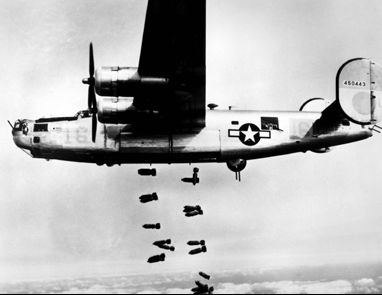 The series of air victories that will decree its glory to Ace of our Aviation begins the 19 July 1943, the day of the first bombing on the city of Rome. That day Gorrini enters into action with other 37 pilots of the 3º Stormo against well 930 aircraft, including bombers and fighter-escorting US Air Force. Take off from the base of Cerveteri with its 85ª squadron and intercept, off Ostia, a formation of B-17 Flying Fortress, breaking down one. According to some sources, on the same day, during a single mission, knocked down a B-24 Consolidated bomber Liberator and a Lockheed P-38 Lightning fighter escort, severely damaging another.
The series of air victories that will decree its glory to Ace of our Aviation begins the 19 July 1943, the day of the first bombing on the city of Rome. That day Gorrini enters into action with other 37 pilots of the 3º Stormo against well 930 aircraft, including bombers and fighter-escorting US Air Force. Take off from the base of Cerveteri with its 85ª squadron and intercept, off Ostia, a formation of B-17 Flying Fortress, breaking down one. According to some sources, on the same day, during a single mission, knocked down a B-24 Consolidated bomber Liberator and a Lockheed P-38 Lightning fighter escort, severely damaging another.
The next day, the 20 July, attacks a new formation of B-17 Flying Fortress, this time aboard the Macchi Mc. 205 "Veltro" trimming, with the powerful armor of the "Veltro", the wing of the bomber, determining the screwing.
The 13 August Rome suffers the second of the two heaviest bombings in its history. Gorrini and the few other pilots of the 83ª and 85ª squadron, placed in defense of Rome, take off to intercept 409 aircraft, between bombers and escort hunt of the US Air Force. Macchi Mc. 205 "Veltro" is really a competitive fighter, able to climb up to 10.000 meters and perfectly preserve its agility, which the Macchi Mc.202 could not do. At about 20 kilometers across the Anzio, at 7.000 meters, it intercepts the first formation of B-17 escorted by the powerful P-38 Lightning fighters. Gorrini launches the attack of a first B-17, which is defiladed compared to the formation, breaking it down. During the disengagement it is attacked by the spare P-38s. Being in extreme numerical inferiority, he is unable to save himself and is reached by a rafficanemics. Fortunately, he manages to jump with the parachute from 2.000 meters of altitude, landing unharmed near Littoria.
The 26 and the 27 August breaks down, with the 20 millimeter cannons of his Macchi Mc. 205, a Supermarine Spitfire and two B-24. In action one of the Mauser cannons overheats, explodes and tears the wing, but Gorrini, while running out of fuel, manages to glide and land at the German base of Pratica di Mare. Three days later, the 29 of August breaks down two P-38s and damages two more. The next day he destroys another B-17 bomber and is mentioned in the war bulletin.
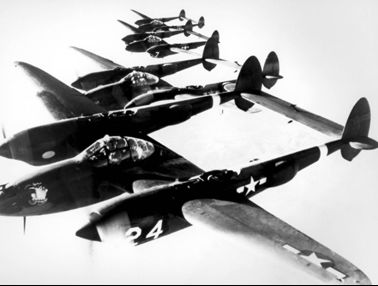 The August 31 takes place the last fight with the Regia Aeronautica in the sky of Naples, against the Supermarine Spitfire and the P-38 escorting the US bombers. Gorrini breaks down a Supermarine Spitfire and damages another P-38. In action, once again in extreme numerical inferiority, he is hit and forced to make a fortune landing. This time he will report serious injuries and will be hospitalized. During the convalescence the 8 September 1943 armistice between Italy and the Allies arrives. Gorrini, at that time, had supported well 132 fights, achieved 15 safe knockdowns and 9 probable, had been mentioned several times on the war bulletin and proposed for decorations, obtaining 2. Gorrini decides to respond to the call of Lt. Col. Ernesto Botto and reaches Northern Italy to continue fighting, in the ranks of the National Republican Air Force, against the Allies.
The August 31 takes place the last fight with the Regia Aeronautica in the sky of Naples, against the Supermarine Spitfire and the P-38 escorting the US bombers. Gorrini breaks down a Supermarine Spitfire and damages another P-38. In action, once again in extreme numerical inferiority, he is hit and forced to make a fortune landing. This time he will report serious injuries and will be hospitalized. During the convalescence the 8 September 1943 armistice between Italy and the Allies arrives. Gorrini, at that time, had supported well 132 fights, achieved 15 safe knockdowns and 9 probable, had been mentioned several times on the war bulletin and proposed for decorations, obtaining 2. Gorrini decides to respond to the call of Lt. Col. Ernesto Botto and reaches Northern Italy to continue fighting, in the ranks of the National Republican Air Force, against the Allies.
The 23 December 1943 enlisted in the National Republican Air Force, in the 1º Hunting Group "Ace of sticks". The 30 January, with its reconstituted department as 2 ^ Squadron Hunting "Vespa Arrabbiata" of the 1 ° Group, and with the identifier of "Vespa 2", is again in flight, in the sky of Grado, at the controls of a Macchi Mc. 205 "Veltro". The Squadron attacks a formation of American bombers escorted by the P-47 "Thunderbolt" of the 325 ° Fighter Group and Gorrini manages to overthrow one of the four US quadrimopters. The following morning we repeat, intercepting and knocking down a reconnaissance P-38 in the Comacchio lagoon.
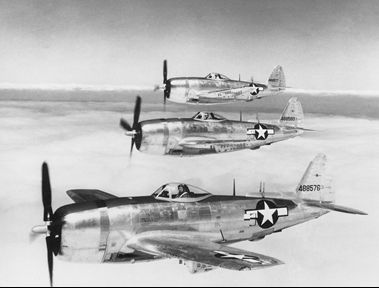 Gorrini's last shooting dates back to the spring of 1944. On 11 March 1944, he shot down yet another B-17. On 6 April, north of Zadar, he shot down his second P-47 Thunderbolt only to be forced to launch following gusts from a second Thunderbolt. On 15 June 1944, however, Gorrini's last fight took place over the skies of Reggio Emilia. His squadron took off on alarm, but with a serious delay. The formation failed to gain sufficient altitude for the combat, so the enemy aircraft literally swooped into the Squadron. Gorrini was hit, but fortunately he jumped with the parachute. During the descent to earth he hit his back hard on the ground and lost consciousness. He was recovered by Major Adriano Visconti and hospitalized. When he recovered completely, the war was over and he did not fight anymore.
Gorrini's last shooting dates back to the spring of 1944. On 11 March 1944, he shot down yet another B-17. On 6 April, north of Zadar, he shot down his second P-47 Thunderbolt only to be forced to launch following gusts from a second Thunderbolt. On 15 June 1944, however, Gorrini's last fight took place over the skies of Reggio Emilia. His squadron took off on alarm, but with a serious delay. The formation failed to gain sufficient altitude for the combat, so the enemy aircraft literally swooped into the Squadron. Gorrini was hit, but fortunately he jumped with the parachute. During the descent to earth he hit his back hard on the ground and lost consciousness. He was recovered by Major Adriano Visconti and hospitalized. When he recovered completely, the war was over and he did not fight anymore.
After the war he was reinstated in the Air Force and in the 1958 he was awarded the Gold Medal for military valor with the following motivation:
"The most daring hunter of the sky, already distinguished by the demolition of two adversary planes, still had his exceptional qualities as an indomitable fighter, always and everywhere attacking the enemy. In 132, aerial fights with the inexorable fire of his weapons knocked down numerous large bombers and effectively struck an even greater number, before being in turn knocked down. Saving himself with the parachute, burned but not domo, he returned with inexhaustible courage to pounce on his opponent, continuing to achieve brilliant successes with the demolition and damage of other aircraft. Unparalleled example of daring and dedication to the homeland. "
ASI Heaven - Egypt - Greece - Italy, 3 June 1941 - 31 August 1943.
Carmine Savoia

